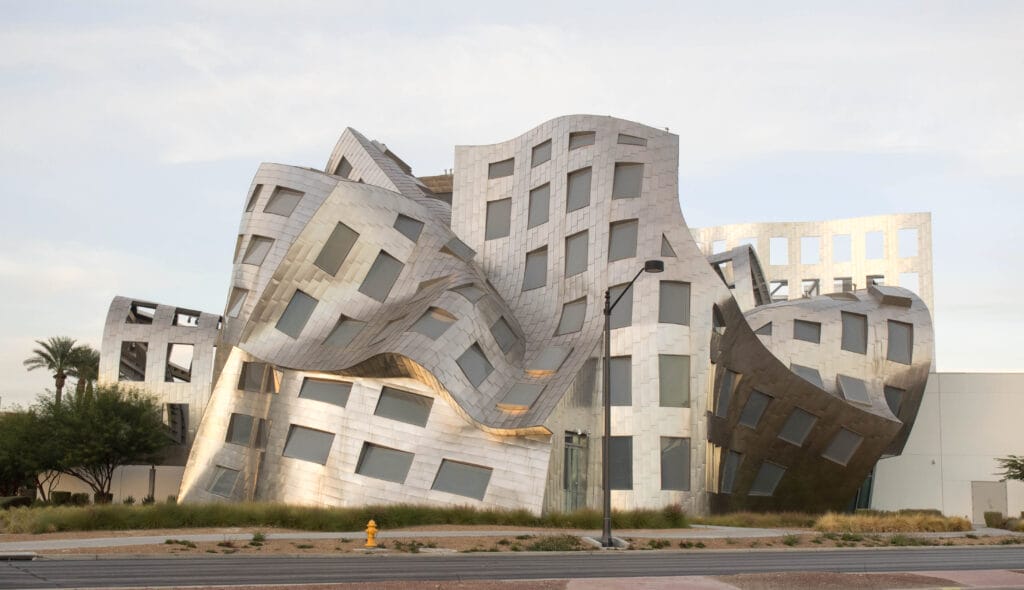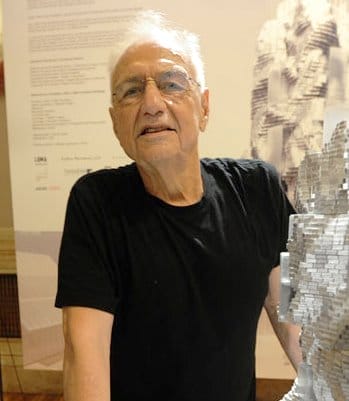Throughout history, there have been numerous architects who have left their mark on the world with their innovative designs and groundbreaking structures. One such architect is Frank Gehry, a visionary who has redefined modern design with his unique and distinctive style. In this article, we will explore the life and career of Frank Gehry, delving into his early beginnings, his architectural evolution, signature design elements, and iconic projects. We will also discuss the impact of Gehry’s work on modern architecture and his legacy for future generations.
Introduction to Frank Gehry
Frank Gehry is a Canadian-born American architect who has been hailed as one of the most important figures in modern architecture. Born in Toronto in 1929, Gehry moved to Los Angeles with his family in 1947. He later obtained his Bachelor of Architecture degree from the University of Southern California in 1954 and studied city planning at the Harvard Graduate School of Design. Gehry’s career spans over six decades, and his works have been featured in countless exhibitions and retrospectives around the world.
Gehry’s architectural style is characterized by its use of unconventional materials, bold shapes, and innovative forms. He has been described as a “deconstructivist,” as his designs often break down traditional architectural conventions and challenge the notions of what a building should be. Gehry’s work has garnered numerous awards and accolades, and he has been named one of the most influential architects of our time.

Frank Gehry’s Early Life and Education
Frank Gehry was born Frank Owen Goldberg in Toronto, Canada, on February 28, 1929, to Jewish immigrants from Poland. His father, Irving Goldberg, was a salesman, while his mother, Thelma Caplanski, was a homemaker. Gehry’s interest in architecture and design began at a young age, as he spent his childhood building imaginary cities with scrap materials and playing with blocks.
In 1947, Gehry’s family moved to Los Angeles, where he would later attend Los Angeles City College before transferring to the University of Southern California’s School of Architecture. After graduating in 1954, Gehry moved to Cambridge, Massachusetts, to study city planning at Harvard University’s Graduate School of Design. However, disillusioned with the field, Gehry left the program without completing his degree and returned to Los Angeles to begin his architectural career.
Gehry’s early professional experiences included working for prominent architects such as Victor Gruen and Pereira & Luckman. He also briefly served in the United States Army. These experiences helped to shape Gehry’s architectural sensibilities and laid the groundwork for his future career as an innovative and influential architect.
The Evolution of Gehry’s Architectural Style
Frank Gehry’s architectural style has evolved over the course of his career, reflecting his experimentation with new materials, forms, and technologies. In the 1960s, Gehry began exploring the use of unconventional materials in his designs, such as chain-link fencing, corrugated metal, and plywood. This experimentation resulted in a raw, industrial aesthetic that would become a hallmark of Gehry’s work.
In the 1970s and 1980s, Gehry continued to develop his unique architectural language, incorporating more sculptural elements and organic forms into his designs. This period saw the birth of some of Gehry’s most iconic projects, such as the Guggenheim Museum Bilbao and the Walt Disney Concert Hall. These buildings exemplify Gehry’s ability to transform everyday materials into extraordinary structures with their undulating, curvilinear forms and shimmering metallic exteriors.
The 21st century has seen Gehry continue to push the boundaries of architecture, embracing new technologies such as 3D modeling and digital fabrication. These advancements have allowed Gehry to create even more complex and daring structures, further solidifying his status as a visionary architect.

Signature Elements in Frank Gehry’s Designs
Frank Gehry’s designs are known for their distinctive, sculptural forms and innovative use of materials. Some of the signature elements that can be found in Gehry’s projects include:
- Deconstructivist approach: Gehry’s buildings often challenge traditional architectural conventions, with irregular shapes, fragmented forms, and non-rectilinear geometries. This deconstructivist approach creates a sense of movement and fluidity in his designs.
- Use of unconventional materials: Gehry is known for using everyday materials such as chain-link fencing, corrugated metal, and plywood in his designs, transforming them into extraordinary architectural elements.
- Sculptural and organic forms: Many of Gehry’s buildings feature curvilinear, undulating forms that evoke natural shapes and create a sense of dynamism and movement.
- Integration of art and architecture: Gehry’s designs often blur the line between architecture and sculpture, with his buildings serving as both functional spaces and works of art.
- Collaboration with artists: Throughout his career, Gehry has collaborated with numerous artists, incorporating their work into his buildings and creating unique, multidisciplinary projects.
Iconic Projects by Frank Gehry
Frank Gehry’s career has produced numerous iconic buildings that have transformed the architectural landscape. Some of his most renowned projects include:
- Guggenheim Museum Bilbao (1997): Located in Bilbao, Spain, the Guggenheim Museum is perhaps Gehry’s most famous work. Its curvilinear, titanium-clad exterior has become a symbol of the city and a landmark of contemporary architecture.
- Walt Disney Concert Hall (2003): Situated in Los Angeles, the Walt Disney Concert Hall is a striking example of Gehry’s innovative use of materials and sculptural forms. The building’s undulating stainless steel exterior creates a sense of movement, while its acoustically-advanced interior serves as a world-class venue for music performances.
- Dancing House (1996): Co-designed with Czech architect Vlado Milunić, the Dancing House in Prague is a playful example of Gehry’s deconstructivist approach. The building’s unusual shape, inspired by the movement of dancers, has made it a popular tourist attraction and a symbol of the city’s post-communist transformation.
- Vitra Design Museum (1989): Located in Weil am Rhein, Germany, the Vitra Design Museum showcases Gehry’s use of unconventional materials and forms. Its fragmented, white-plaster exterior and bold geometric shapes make it a striking example of Gehry’s early architectural style.
- Fondation Louis Vuitton (2014): Situated in Paris, the Fondation Louis Vuitton is a testament to Gehry’s ability to create extraordinary structures using cutting-edge technology. Its glass sails and intricate, interlocking forms create a sense of movement and fluidity, making it a stunning example of contemporary architecture.

Awards and Recognitions for Frank Gehry’s Work
Throughout his career, Frank Gehry has received numerous awards and recognitions for his contributions to the field of architecture. Some of these accolades include:
- Pritzker Architecture Prize (1989): Often referred to as the “Nobel Prize of Architecture,” the Pritzker Prize is one of the highest honors in the field. Gehry received the award in 1989 in recognition of his innovative designs and groundbreaking work.
- AIA Gold Medal (1999): The American Institute of Architects awarded Gehry the Gold Medal in 1999 for his significant contributions to the field of architecture and his influence on the practice.
- National Medal of Arts (1998): Gehry was awarded the National Medal of Arts by President Bill Clinton in 1998, in recognition of his impact on American culture through his architectural designs.
- Order of Canada (2002): In 2002, Gehry was appointed as a Companion of the Order of Canada, the country’s highest civilian honor, for his contributions to the field of architecture and his lasting impact on the nation’s cultural landscape.
- Prince of Asturias Award for the Arts (2014): Gehry received the prestigious Spanish award in recognition of his significant contributions to the field of architecture and his influence on contemporary design.
The Impact of Frank Gehry on Modern Architecture
Frank Gehry’s work has had a profound impact on the field of modern architecture, challenging conventional notions of form and function and pushing the boundaries of what is possible in design. His deconstructivist approach has inspired a generation of architects and designers to explore new materials, technologies, and forms, resulting in a more diverse and vibrant architectural landscape.
Gehry’s buildings have also had a significant impact on the cities in which they are located, often serving as catalysts for urban revitalization and economic development. The Guggenheim Museum Bilbao, for example, has been credited with transforming the city’s fortunes, attracting millions of tourists and sparking a wave of investment and regeneration.
Furthermore, Gehry’s integration of art and architecture has contributed to a more holistic understanding of design, with his buildings serving as both functional spaces and works of art. This approach has inspired architects and designers to think more creatively about the role of architecture in society and its potential to enrich our lives.

Collaborations and Partnerships in Gehry’s Career
Throughout his career, Frank Gehry has collaborated with numerous artists, designers, and other professionals, resulting in a diverse body of work that spans multiple disciplines. Some of these collaborations include:
- Vitra: Gehry has worked with the Swiss furniture manufacturer Vitra on several occasions, designing the Vitra Design Museum and the Vitra Fire Station, as well as collaborating on furniture collections.
- Fish Lamps: In the 1980s, Gehry collaborated with New City Editions to create a series of fish-shaped lamps made from Formica, a material he had used extensively in his architectural designs.
- Louis Vuitton: Gehry’s collaboration with the luxury fashion brand resulted in the creation of the Fondation Louis Vuitton, a cultural center and museum in Paris.
- Annenberg Center for Performing Arts: Gehry collaborated with the Annenberg Foundation to design the performing arts center in Beverly Hills, California.
- Collaboration with artists: Gehry has worked with numerous artists throughout his career, including Claes Oldenburg, Richard Serra, and Jeff Koons, incorporating their work into his buildings and creating unique, multidisciplinary projects.
Frank Gehry’s Legacy and Influence on Future Architects
Frank Gehry’s innovative designs and groundbreaking structures have left an indelible mark on the field of architecture, inspiring future generations of architects to think outside the box and push the boundaries of what is possible in design. Gehry’s deconstructivist approach, use of unconventional materials, and integration of art and architecture have all contributed to a more diverse and vibrant architectural landscape.
In addition to his influence on the field of architecture, Gehry’s work has also had a significant impact on urban planning, design education, and the broader cultural landscape. His buildings have served as catalysts for urban revitalization and economic development, while his collaborations with artists and designers have helped to foster a more holistic understanding of design and its potential to enrich our lives.
As we look to the future, it is clear that Frank Gehry’s legacy will continue to inspire and shape the world of architecture for years to come.

Frank Gehry’s career has been marked by innovation, experimentation, and a relentless pursuit of new forms and materials. His groundbreaking designs and signature architectural style have redefined modern design and left a lasting impact on the field of architecture. From his early beginnings in Toronto to his iconic projects around the world, Gehry has consistently pushed the boundaries of what is possible in design, leaving a legacy that will continue to inspire future generations of architects and designers.
